Your Core Question Answered
Is it good feng shui to have family photos in the bedroom? The simple answer is no. The bedroom should be a peaceful place for rest and romance, and family photos can quietly disturb this important energy. Many people put these special photos in the bedroom with good intentions, not knowing they might create energy problems. This is one of the most common questions we get about feng shui. This guide will explain why this rule exists and also share important exceptions and better ways to display your favorite memories around your home. We will give you a complete solution for creating a space that feels both loving and peaceful.
Understanding the Energy Effects

To understand why we suggest avoiding family photos in the bedroom, you need to first understand what the bedroom is meant to do. Feng shui teaches that every room has a main purpose, and its energy should help that purpose.
A Safe Space for Partners
The bedroom's main jobs are rest, renewal, and for couples, romance. The energy, or Qi, in this room should be mostly calm, private, and healing. It is your personal escape from the busy outside world—a place to recharge and connect deeply with your partner. The space should support peace and privacy above everything else. When the bedroom energy is balanced, it helps you sleep better, reduces stress, and makes the romantic bond between partners stronger. This is the foundation for all other bedroom feng shui changes.
How Photos Change Energy
Photos are not just paper and ink; they are powerful containers of energy. They carry the living Qi of the people shown in them. When you place photos of your parents, children, in-laws, or large family groups in your bedroom, you are unconsciously inviting their energy into your most private space. On an energy level, this can create a "crowded" or "watched" feeling, even if you don't notice it consciously. Think of it this way: you love your children and parents, but you would not want them physically in your bedroom when you are trying to sleep or be intimate. The energy presence carried by photos works in a similar, subtle way, possibly making deep relaxation and romantic connection harder.
The Yin and Yang Problem
Feng shui is based on balancing Yin and Yang energies. Yang is the active, bright, and social energy, while Yin is the passive, quiet, and receiving energy. A bedroom should be mostly a Yin space to help rest and calm. Family photos, especially those of active children playing or large, happy group shots, are filled with bright, active Yang energy. Putting this high-energy Yang in a Yin environment creates a conflict. It's like trying to sleep in a room with a bright light on or loud music playing. Your nervous system may sense this active energy, making it harder to fully relax and move into deep rest or intimacy.
Are There Any Exceptions?
While the general rule is clear, feng shui is a detailed practice, not a strict set of unchanging laws. The key is to understand the energy of the specific photo and its relationship to the people who use the room.
The Couple's Photos
Photos of the couple who share the bedroom are not just an exception; they are highly recommended. These images strengthen the partnership, love, and unity that the bedroom is meant to support. A beautiful, happy photo of the two of you serves as a constant, positive reminder of your bond. It fits perfectly with the room's main energy purpose of supporting the couple. The best placement is often where you can see it easily from bed, such as on a nightstand or dresser, so it's one of the last and first things you see each day, strengthening feelings of love and connection.
Photos of Your Children
This is a common gray area and a source of confusion for many loving parents. While the best placement for children's photos is in the family areas of the home, we understand the deep emotional connection. If having a photo of your child brings you great comfort and joy, a single, small, and subtle photo is unlikely to cause a major energy problem. However, this is very different from creating a large gallery wall dedicated to your kids. A large display can energetically shift the focus of the room from "couple's retreat" to "parents' headquarters," which can subtly push aside the romantic partnership.
Extended Family and Friends
As a general rule, photos of your parents, in-laws, siblings, and friends should be kept out of the bedroom. The energy of parents, no matter how loving, can unconsciously represent authority, duty, and your role as a "child." This brings in an energy of obligation that conflicts with the equal partnership energy needed in a couple's sanctuary. The bedroom is about your current partnership and your future together, not the family relationships of the past.
Photos of Deceased Relatives
This topic requires great care. Photos of loved ones who have passed away carry a very strong and specific type of Yin energy. While they represent love, they also connect to memory, loss, and the past. The bedroom is a space for rest, renewal, and life-giving energy. Placing photos of the deceased here can accidentally create an atmosphere of sadness or gloom, which is not helpful for restorative sleep or vibrant living. A much better location is a personal altar, a study, or a quiet, respectful place where you can honor their memory without putting that somber energy onto your main space of rest.
| Photo Type | Feng Shui Recommendation | Reasoning |
|---|---|---|
| The Couple (Wedding/Happy) | Highly Recommended | Strengthens the romantic partnership and bond. |
| Just the Children | Use with Caution | Can shift focus from couple to parental roles. A small photo is okay; a large display is not ideal. |
| The Whole Family (with kids) | Avoid | Creates a "crowded" energy; puts family role over partner role in this space. |
| Parents / In-Laws | Strongly Avoid | Brings in energy of obligation, authority, and past generations. |
| Deceased Relatives | Strongly Avoid | Yin energy can bring sadness; better for an altar or quiet space. |
From Theory to Practice: A Case Study
Abstract principles are helpful, but seeing them in action provides true clarity. At THE QI FLOW, we often work with clients whose living spaces reflect their life challenges. This case study of a couple we'll call "Mark and Sarah" perfectly shows the power of photo placement.
The Client's Challenge
Mark and Sarah came to us with a common but painful problem: "We feel more like roommates than husband and wife." They loved each other, but the spark had faded, and they felt distant despite sharing a home and a life. During our virtual consultation, we asked them to show us their bedroom. The walls told a story. Above their bed was a large, formal family portrait with their two children. On Sarah's nightstand was a photo of her and her mother. On Mark's dresser was a group shot of his college friends and a photo of his late father. Their own wedding photo was a small 5x7 frame, almost lost among the others.
Our Diagnosis and Solution
Our team at THE QI FLOW immediately identified the energy overload. Their bedroom, the sanctuary meant for their partnership, was working as a memorial hall, a children's shrine, and a social club. The energy of "parent," "child," "friend," and "grieving son" was overwhelming the energy of "partner" and "lover."
We provided a clear, three-step action plan:
1. Declutter the Energy: We advised them to remove all photos from the bedroom. The only one to remain would be a single, beautiful photo of just the two of them. They chose a candid shot from a recent vacation where they looked genuinely happy and relaxed. We had them place it in a new, prominent frame on the main dresser.
2. Create a Legacy Wall: To honor their parents and ancestors respectfully, we guided them to create a "Legacy Wall" in the main hallway. This space, a connector in the home, is perfect for representing the journey of the family. They gathered the photos of their parents and late father and arranged them beautifully there.
3. Celebrate the Children: For the photos of their wonderful kids, we suggested creating a vibrant gallery wall in the family room. This is an active, Yang space where the joyful energy of children is perfectly at home and can be celebrated by everyone.
The Result of the Shift

The feedback we received a few weeks later was amazing. Sarah reported that the bedroom immediately felt "lighter" and more intimate. It felt like "their space" for the first time in years. Mark shared that he slept more deeply and felt a renewed sense of connection to his wife, unburdened by the unconscious pressures the other photos represented. Moving the photos to their appropriate energy homes didn't erase their importance; it made them stronger. The Legacy Wall became a point of pride, and the children's gallery in the family room brought life and joy to the home's social hub. This simple, targeted change acted as a powerful catalyst, helping Mark and Sarah reclaim their sanctuary and, in doing so, rediscover their connection.
The Right Place for a Face
If not the bedroom, then where should your cherished family photos go? Placing them correctly can enhance the specific energy of each area of your home, creating a balanced and supportive environment for the whole family.
The Living or Family Room
This is the heart of the home, a shared space where family life happens. It's an active, Yang area filled with conversation, laughter, and togetherness. This makes it the absolute best location for photos of the entire family, large group shots, and pictures of your active children. Displaying them here strengthens the sense of a happy, united family unit in the very space where you share your lives. A gallery wall or a collection on a console table can create a beautiful and energetically appropriate focal point.
The Hallway or Staircase
In feng shui, hallways are considered the "veins" of the home, moving Qi from one area to another. This makes them a fantastic place to create a visual timeline of your family's journey. Arranging photos in order as you move down a hall or up a staircase can represent your family's growth and shared history. It tells a story of connection and progress, energizing these transition spaces and reminding you of your shared path every time you walk by.
The Dining Room
The dining room is a space connected with nourishment, abundance, and togetherness. Placing photos here that show happy family gatherings—like holidays, birthdays, or celebrations—can enhance the energy of gratitude and connection during meals. It strengthens the idea of the family as a source of abundance and joy. Be mindful not to create clutter; a few well-chosen, happy photos are more effective than a dozen random ones.
Using the Bagua Map
For a more advanced approach, you can use the feng shui Bagua map. This is an energy map that you lay over your home's floor plan to identify specific life areas. To use it, stand at your front door looking into your home. The map is a three-by-three grid.
- The best spot for family photos is the "Zhen" area, which governs Family and New Beginnings. This is located in the middle-left section of your home from the perspective of the front door. Placing photos of your family unit here, especially those that include older generations, can strengthen family bonds and support health.
- The "Dui" area, which governs Children and Creativity, is the ideal location for photos of your kids. This is located in the middle-right section of your home. Displaying their pictures here can boost their creative energy and joy, and it honors their special place within the family.
Using the Bagua allows for a highly intentional placement that aligns the energy of your photos with the specific life goals you wish to support.
Beyond Placement: A Complete Checklist
Expert feng shui goes beyond just location. The content of the photo, the frame it's in, and the way it's displayed all contribute to its overall energy impact. Becoming a conscious curator of your photos is a powerful way to improve your home's Qi.
The Emotion of the Moment
The energy of the moment a photo was taken is forever captured within that image. When selecting photos for display, choose ones that radiate genuine joy, love, and happiness. Avoid using photos where people look forced, unhappy, or stressed. Similarly, it's best to put away pictures from a particularly difficult or painful period in your life. Your home should be a gallery of your best moments and goals, not a museum of past struggles. The emotions in your photos project that same energy back into your space every single day.
The Importance of Frames
Frames are more than just decorative; they can be used to support the energy of the photo and the room through the Five Elements theory.
* Wood frames correspond to the Wood element, which represents growth, vitality, and family. This makes them an excellent, all-around choice for family photos, especially in the "Zhen" (Family) area.
* Metal frames correspond to the Metal element, representing precision, clarity, and joy. They work well in a modern style or in the "Dui" (Children) area, bringing a sense of brightness and focus.
* Red or ornate frames can represent the Fire element, which is about passion, fame, and recognition. Use these sparingly for a powerful impact, perhaps for a photo celebrating a major achievement.
Curation, Not Clutter
In feng shui, clutter is stagnant energy, and this applies to photos as well. A home filled with too many photos on every available surface can feel chaotic and overwhelming. It's far more powerful to practice curation. Select only the best, most meaningful, and most joyful photos. Display them thoughtfully and give them space to breathe. A single, beautiful, well-framed photo can have a much more positive impact than twenty small, mismatched frames crowded onto a single shelf. Quality always beats quantity.
Your 5-Minute Photo Audit
Use this simple checklist to audit the photos in your home and ensure they are contributing positive energy.
- [ ] Review the Room: Is this photo in the correct room based on its energy? (e.g., couple photo in the bedroom, family photo in the living room).
- [ ] Check the Emotion: When I look at this photo, does it make me feel genuinely happy, loved, and optimistic?
- [ ] Inspect the Frame: Is the frame in good condition? Does its material and color support the photo and the room's energy?
- [ ] Assess the Display: Is this photo part of a thoughtful, curated display, or is it contributing to a feeling of clutter?
- [ ] Trust Your Gut: Beyond all the rules, how does this photo feel to me in this specific spot? Your intuition is a powerful feng shui tool.
Curating Your Best Life
To summarize the core principle: your bedroom is a sanctuary for you and your partner. Keep it clear of the loving but complex energies of other family members to protect its function of rest and romance. Move your cherished family photos to the more active, shared areas of your home, like the living room and hallways, where their vibrant energy can be celebrated.
Use these feng shui principles as your trusted guide, but always listen to your own intuition. Your home is a reflection of your life. By consciously curating the images you display, you are not just decorating; you are actively shaping your environment to support a life filled with deeper connection, greater harmony, and more joy.
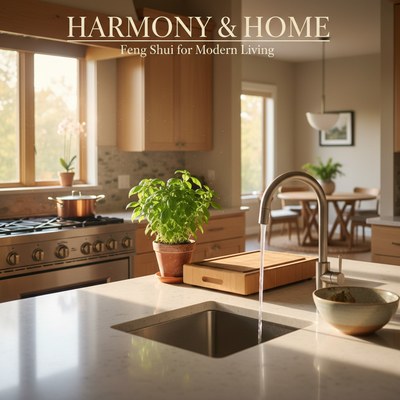
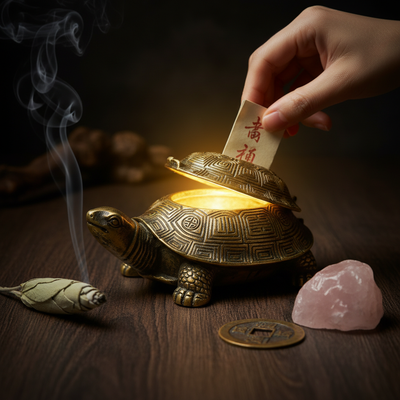
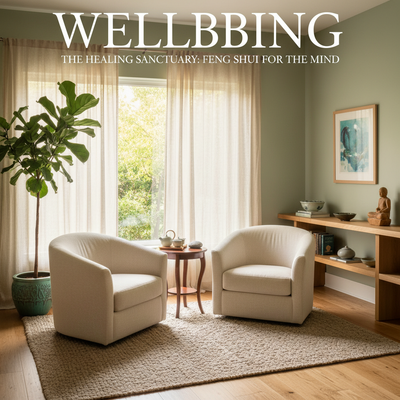


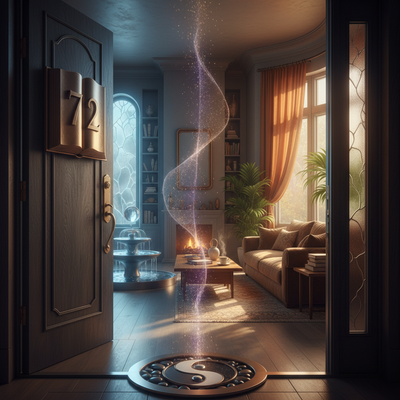
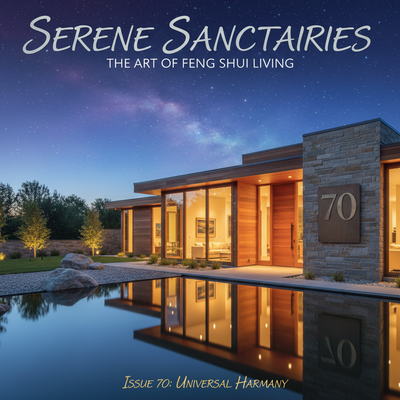

0 comments